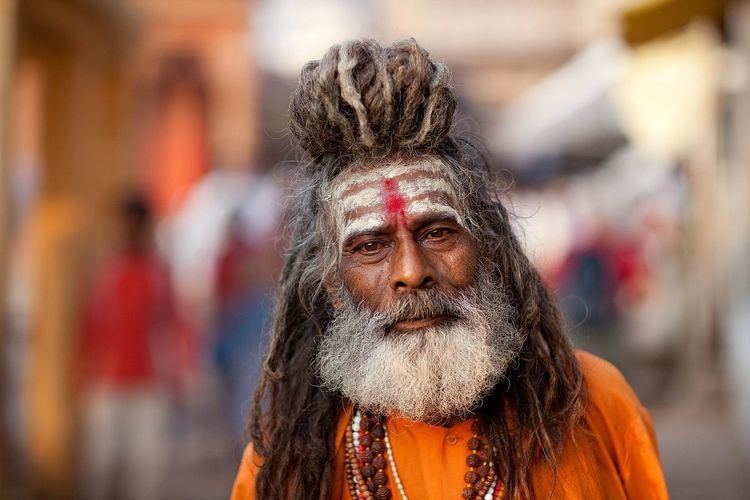 | ||
Tripundra (Sanskrit: त्रिपुण्ड्र tripuṇḍra "three marks") is a Saivite tilaka, and a body art with origins in India. It consists of three horizontal lines on the forehead, usually with a dot made from sacred ash, and has spiritual meaning in Shiva tradition within Hinduism. A Vishnu tradition related mark consisting of vertical lines is called Urdhva Pundra.
Contents
History
The practice is discussed in medieval era Hindu texts such as Bhasmajabala Upanishad, Brihajjabala Upanishad and Kalagni Rudra Upanishad. The allegorical significance of the "three ash lines", states Deussen, is that the tradition sees them as streaks of three Vedic fires, three audible syllables of AUM, three Guṇas, three worlds, three Atmans, three Vedas and three aspects of Shiva.
Usage and significance
The Tripuṇḍra, three horizontal lines, on the forehead as well as other body parts are symbols during rites of passages, and for some a daily practice. These lines, states Antonio Rigopoulos, represent Shiva’s threefold power of will (icchāśakti), knowledge (jñānaśakti), and action (kriyāśakti). The Tripuṇḍra described in this and other Shaiva texts also symbolizes Shiva’s trident (triśūla) and the divine triad of Brahmā, Vishnu, and Shiva.
Tripundra, to those who apply it, is a reminder of the spiritual aims of life, the truth that body and material things shall someday become ash, and that mukti is a worthy goal. Tri means three, pundra means one which is released. There are three horizontal lines of vibhuti (holy ash) on the brow, often with a dot (bindu) as the third eye. Holy ash, usually produced from burnt cow dung, is a reminder of the temporary nature of the physical body and the importance of spiritual attainment and closeness to Shiva (Atman-Brahman). Chapter 2 of Kalagni Rudra Upanishad explains the three lines as various triads: sacred fires, syllables of Om, gunas, worlds, types of atman (Soul), powers, Vedas, the time of extraction of the Vedic drink Soma, and Mahesvara (a form of Shiva).
The "Tri" in the word Tripundra signifies the Triguna – Satva, Raja and Tama; Triloka – Bhuhu, Bhuvaha, Suvaha; Tritapa – Bbhoutika, Daivika, Adhyatmika. Tripundra is also called as Bhasma or Vibhuti. Tripundra also signifies Prana or life force and the three responsibilities performed by Brahma, Vishnu and Shiva respectively. Brahma represents Creation, Vishnu denotes Sustenance and Shiva connotes Destruction. Thus Tripundra symbolises Holy Trinity of Hindu Gods Brahma, Vishnu and Shiva. Tripundra Applying Tripundra on the forehead is termed as "Bhasma dharana". The word Bhasma means calcined ash. Those who wear Tripundra on their forehead, often recite the mantras of the Lord while remembering its spiritual meaning and it is not just a sign of culture or identification.
Regional nomenclature
Tripundra is called பட்டை / Pattai in Tamil. It is also known as Tripundraka.
